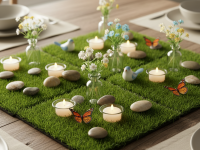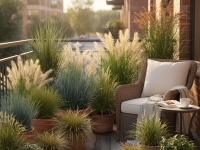Hey there, aspiring wood carver! Ever looked at a block of wood and dreamed of transforming it into something beautiful, something truly yours? That’s the magic of wood carving, and it’s an incredibly rewarding journey. But like any journey, you need the right tools to get started – especially when it comes to your very first carving knife. For begiers, the sheer number of options can be overwhelming, and choosing the wrong one can quickly turn an exciting new hobby into a frustrating chore.
That’s why we’re here today. We’re going to talk about finding that perfect, begier-friendly wood carving knife, specifically tailored for softwoods. Trust me, starting with the right knife and the right wood makes all the difference. It boosts your confidence, minimizes frustration, and most importantly, keeps you safe and eager to carve more. So, let’s dive in and find your new creative companion!
Why Softwoods Are Your Best Friend (Initially)
Before we even get to knives, let’s chat about wood. As a begier, you want to set yourself up for success, and that means choosing softwoods. Why? Because they are incredibly forgiving and much easier to cut, which means less effort, less risk of injury, and a smoother learning curve. Think of them as your training wheels in the carving world.
- Basswood: This is the undisputed champion for begiers. It’s soft, has a uniform, fine grain that carves beautifully in all directions, and doesn’t split easily. You’ll find most begier projects are designed for basswood.
- Pine: Readily available and inexpensive, pine is another good choice, though it’s a bit harder than basswood and has a more pronounced grain. Just be mindful of its resin content, which can gum up your blade.
- Balsa: Extremely soft and lightweight, balsa is fantastic for very delicate work or simply getting a feel for the knife. However, it can be a bit *too* soft for some projects, lacking durability.
- Cottonwood Bark: Often overlooked, cottonwood bark offers a unique textural experience and is relatively soft. It’s perfect for carving small faces, houses, or natural forms, taking advantage of its existing contours.
Starting with these will allow you to focus on developing your technique, understanding grain direction, and getting comfortable with your tool, rather than fighting with a stubborn piece of oak!
What Makes a “Begier-Friendly” Carving Knife?
Alright, now for the star of the show! When you’re just starting out, you need a knife that’s not just sharp, but also manageable, comfortable, and safe. Here’s what to look for:
Blade Material & Razor-Sharp Edge
First and foremost, your knife *must* be sharp. A dull knife is not only frustrating but also incredibly dangerous. You’ll have to exert more force, which increases the chance of slipping and cutting yourself. Look for:
- High Carbon Steel: This is usually preferred for carving knives because it takes and holds a super-sharp edge better than stainless steel. It might rust if not cared for, but the superior edge is worth the extra wipe-down.
- Factory Sharpness: Many reputable brands will come “razor-sharp” right out of the box. While you’ll still want to strop it (we’ll get to that!), a good starting edge is crucial.
Ergonomic and Comfortable Handle
You’ll be holding this knife for extended periods, so comfort is key. A good handle should:
- Fit Your Hand: Not too big, not too small. Look for a handle that fills your palm comfortably, allowing for a firm, controlled grip without cramping.
- Material: Wood handles are traditional and often preferred for their natural feel. Composite handles can also be excellent, offering good grip even when slightly wet or sweaty.
- No Hot Spots: Avoid handles with sharp edges or awkward contours that might dig into your hand during use.
Appropriate Blade Shape and Size
For begiers working with softwoods, simplicity is your friend. You don’t need a whole set of specialized knives just yet. A good general-purpose carving knife is what you’re after:
- Straight Knife / Sloyd Knife: These are fantastic all-rounders. They have a moderately long, straight blade with a slight curve towards the tip. This shape is versatile enough for roughing out shapes, detail work, and general whittling. A blade length of 1.5 to 2.5 inches (4-6 cm) is usually perfect.
- Chip Carving Knife (optional): If you’re specifically interested in geometric chip carving, a small, angled chip carving knife is great, but it’s not as versatile as a straight knife for general whittling.
Avoid tiny detail knives or large, heavy roughing knives initially. A mid-sized, all-purpose knife gives you the most flexibility to learn various cuts.
Safety and Control
While carving knives typically don’t have finger guards like kitchen knives, the design should inherently promote safety:
- Good Balance: A well-balanced knife feels like an extension of your hand, making it easier to control.
- Non-Slip Grip: While not strictly a safety feature of the knife itself, a good handle material that offers a secure grip helps prevent slips.
Top Recommendations for Your First Softwood Carving Knife
Based on experience and countless recommendations from the carving community, here are a few excellent choices that fit the bill for begiers working with softwoods:
1. Morakniv 120 or 106
If you’ve spent even five minutes researching carving knives, you’ve likely come across Morakniv. These Swedish-made knives are legendary for a reason: they offer incredible value, come razor-sharp, and are incredibly durable.
- Morakniv 120: Features a slightly shorter, more pointed blade, excellent for general carving and detail work.
- Morakniv 106: Has a longer, more robust blade, great for roughing out shapes and general whittling.
Both models boast high carbon steel blades that hold an edge beautifully and comfortable, ergonomic birchwood handles. They are often the first knife many experienced carvers recommend, and for good reason.
2. Flexcut KN13 (Detail Knife) or KN14 (Sloyd/Roughing Knife)
Flexcut is a brand synonymous with quality carving tools, and their knives are no exception. They might be a bit pricier than a Morakniv, but many carvers swear by their comfort and edge retention.
- Flexcut KN13 (Detail Knife): Despite its name, this isn’t exclusively for tiny details. Its shorter, finely pointed blade is excellent for controlled cuts and medium detail work on softwoods. The comfortable handle is a standout feature.
- Flexcut KN14 (Sloyd/Roughing Knife): A more general-purpose knife with a slightly larger, curved blade, perfect for removing larger amounts of wood and shaping.
Flexcut knives come exceptionally sharp, and their ergonomic handles are designed for prolonged use, reducing hand fatigue.
3. BeaverCraft S01 or S02
Hailing from Ukraine, BeaverCraft has quickly gained popularity for offering high-quality, budget-friendly carving tools. They are a fantastic entry point for anyone unsure if carving is for them without breaking the bank.
- BeaverCraft S01 (Whittling Knife): A versatile, straight-bladed knife suitable for various carving tasks, from roughing to detailed cuts.
- BeaverCraft S02 (Detail Knife): Features a thier, more pointed blade for finer work and smaller details.
Their knives often come in sets that include a sharpening strop and compound, which is a huge bonus for begiers. The blades are made from high carbon steel, and the handles are generally comfortable hardwood.
Beyond the Knife: Essential Companion Tools & Tips
A great knife is only one piece of the puzzle. To ensure a safe, enjoyable, and successful carving experience, you’ll need a few other essentials:
Sharpening and Stropping Supplies
This is non-negotiable. Your knife *will* get dull, and you *must* know how to maintain its edge. A dull knife is a dangerous knife. All you need to start is:
- Leather Strop: A piece of leather glued to a flat surface.
- Stropping Compound: A polishing abrasive that you apply to the strop.
Regular stropping (every 10-15 minutes of carving, or even more often) will keep your blade hair-shaving sharp. Learning to strop is arguably as important as learning your first carving cut!
Safety First: Gloves and Thumb Guard
Seriously, don’t skimp on safety. Even the most experienced carvers get nicks and cuts, especially when learning new techniques.
- Cut-Resistant Gloves: Invest in at least one for your non-carving hand (the one holding the wood). They are usually made of Kevlar or a similar material.
- Thumb Guard: A leather or rubber protector for your thumb. Your thumb is often used as a brace or pivot point, making it a common target for accidental slips.
Wear them every single time you carve. No exceptions.
Secure Your Workpiece
Trying to carve a piece of wood that’s sliding all over the place is frustrating and dangerous. While many whittlers carve “freehand,” a secure setup is excellent for begiers:
- Bench Vise: If you have a workbench, a small woodcarver’s vise can securely hold your piece.
- C-Clamps: You can clamp your wood to a table if you don’t have a vise.
- Non-Slip Mat: Even for freehand carving, placing a non-slip mat under your wood can provide some stability.
Basic Carving Techniques & Understanding Grain
While this article focuses on knives, remember that the knife is just a tool. Learning how to use it safely and effectively is paramount:
- Push Cut: Pushing the blade away from you.
- Pull Cut: Pulling the blade towards you (use with extreme caution and always away from your body).
- Stop Cut: A crucial cut to prevent splitting beyond your desired line.
- Grain Direction: Always carve “with the grain” initially. Carving against it is called “carving uphill” and will result in tear-out, making the wood difficult to cut cleanly. Spend time understanding how the grain runs in your piece of wood.
Where to Buy & What to Look For
You can find these knives at specialized carving supply stores (online and sometimes local craft stores), or on larger e-commerce platforms like Amazon. When purchasing online, always read reviews, and check seller ratings. A reputable brand and seller are your best bet for getting a quality, genuinely sharp knife.
Conclusion: Your Carving Adventure Awaits!
Choosing your first wood carving knife for softwoods doesn’t have to be daunting. By focusing on a sharp, comfortable, and versatile straight or sloyd knife, combined with essential safety gear and sharpening supplies, you’ll be well on your way to enjoying this incredibly rewarding hobby. Remember, practice makes perfect, and patience is key. Don’t be afraid to make mistakes – they’re just lessons in disguise!
Grab one of these recommended knives, a piece of basswood, don your safety gloves, and start making those first beautiful chips. Happy carving!



